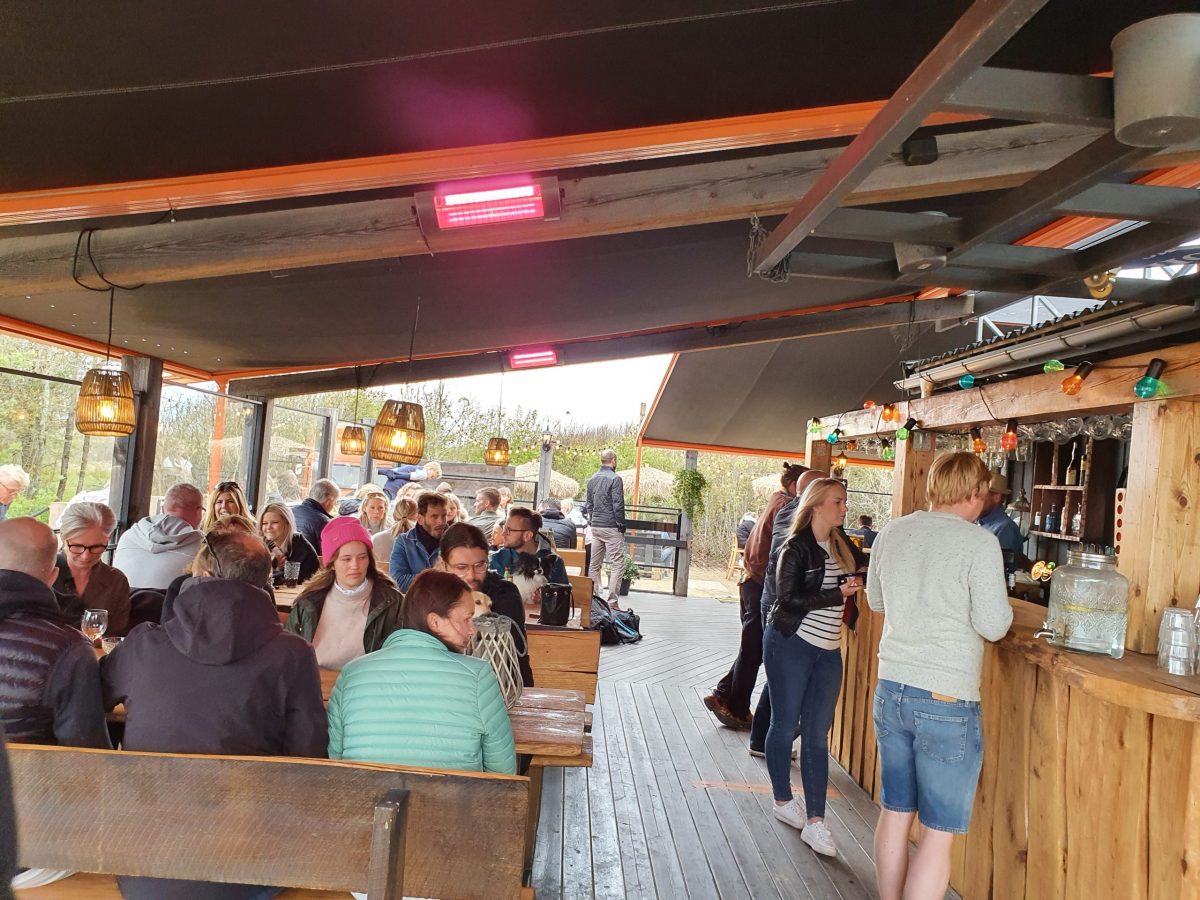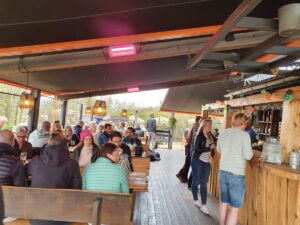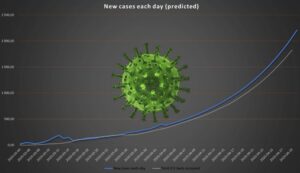
An update about Corona situation in Sweden:
Let us start with good news: 30th of May was the first day without any death case in Sweden after more than 2 months! Sweden kept up with the promise of available 20% extra ICU beds . At the time of this article the number of available beds dedicated to the virus has been increased to 2985 (2195 beds occupied) 1https://www.icuregswe.org/en/data–results/covid-19-in-swedish-intensive-care/?fbclid=IwAR00OyrZ60C3qsNf2DgDTY3Lq0DoEW2o4u7pwHD2kKoPEhnkGZ_tXsW0LCw , Something that is extra ordinary if you consider that the total ICU beds before the outbreak was around 500. This shows that the predictions done in the previous post are at least partially correct and the herd immunity is achieving fast.
However, what is not correct is the declared number of total cases. The recommendation is that you should stay home in case you are sick, even if you have obvious symptoms of COVID-19, unless you feel very sick and have problem with breathing, and only then you may have access to health care, so only the cases that are severe are tested and that is why the number of total cases in table below is not realistic.
The real number of total cases should be something between what Sweden state epidemiologist Dr. Anders Tegnell claimed in Daily Show with Trevor Noah (500,000 only in Stockholm area) and what is reported by today (41800). I have been following Turkey for the last couple of months, Turkeys’ total death cases is similar to Sweden’s and by judging from that a number around 200,000 cases sounds more right.
Holy Swedish summer is on its way. With various holidays in May and June, and long waited sunny weather, Swedes practically have forgotten about the pandemic.
| Rank (death) | Country | Total cases | New cases | Total Death | New death |
| 16 | Turkey | 167,000 | +1000 | 4,630 | +21 |
| 18 | Sweden | 41,800 | +1080 | 4,560 | +20 |
| 37 | Denmark | 11,811 | +40 | 582 | +2 |
Now lets go for the bad news. More than 3300 new cases in the last two days comprises 8% of total cases fromt the beginning of the outbreak. This is a warning signal: Holy Swedish summer is on its way. With various holidays in May and June, and long waited sunny weather, Swedes practically forget about the pandemic.

Where Sweden stands with her unconventional strategy
Now after few months we can confidently compare and conclude where Sweden stands compared to other countries and whether their strategy is working or not (To read more about Sweden’s Strategy read this post).
Figure 1 shows that the number of daily deaths started to drop from end of April and the trend continues, albeit with a slow slope. This is a good news but there are complaints
It should be noted that Sweden’s population is twice as Denmark’s.
But where does this difference come from? Lets compare three Nordic countries: Sweden, Norway and Denmark on the time line of outbreak:
These countries, Sweden, Norway and Denmark, began to see an increase in deaths at the same time, around March 18th this year. On March 16th, Sweden had reported a total of 3 deaths in covid-19, Denmark had reported 1 death and Norway 1 death.
However, Sweden came to choose a different anti-infection strategy than Finland, Norway and Denmark – and the rest of the world.
On April 16, Sweden had a total of 1,203 dead in covid-19, Denmark had reported 309 dead and Norway 130 dead.
On May 16th, Sweden had reported a total of 3,646 dead in covid-19, Denmark had reported 537 dead and Norway had 232 dead.
On June 4th (time of writing of this article) Sweden had reported a total of 4560 dead in covid-19, Denmark had reported 582 dead and Norway had only 238 dead.
The difference comes from restricted quarantine strategies and travel bans for the other Nordic countries.
what was the effect of quarantine?
As a matter of fact, all the vulnerable countries, countries with highest death rate per capita, have implemented harsh restriction (Except Sweden). Figure 3 shows the trend of casualty in top nine countries with the highest number of deaths. You can see all other eight start to experience a drop of death rate between 4 to 6 weeks after the start of quarantine. Sweden however, doesn’t seem to have a magnificent drop compared to others. That is why according to the European Public Health Authority’s figures ECDC: On May 19, Sweden had the most deaths in the world per million inhabitants. The same was true for May 14, 15 and 18 as well.

Now all this may sound scary but it is important to understand that (almost) no one is Sweden died because of shortage in healthcare. A long restricted quarantine has consequences that in long and middle run can cause more physiological , economical, sociological damage especially to younger population than unfortunate death of few thousands of older population in less restricted quarantine. That is why most countries are opening up after two, three months of restricted quarantine, in hope of reaching what Sweden is now, limited quarantine. Death rates in these countries will raise again, but with the collective awareness, fear and some restrictions it will not skyrocket again. That is why full quarantine is not an option for Sweden yet, unless the trend that we start to see in June 3d and 4th continues.
The discovery of a vaccine can change the quarantine strategies
Whatever was written above was with an assumption that there would be no release date for the vaccine.
As soon as the vaccine release date becomes known the herd immunity strategy loses its value and a new equation has to be applied.
First let me show you with my simple and childish plots how the vaccine can affect the death rate trend. Figure 4 shows the usual trend and effect of vaccine in death rate per day without quarantine, while figure 5 shows the same trend with introduction of full but short-lived quarantine.
In the news we read that there is a potential for mass production of a vaccine already from September, something that just few months ago sounded impossible.


The area with cross pattern in figure 4 indicates the total death difference due to two different quarantine strategies.
The Equation
In order to determine whether it is worth to apply a full quarantine in the horizon of new vaccine we need to solve an equation. Unfortunately the unknowns in the equation are too many for me to solve, but I will bring it up here. Only by solving this equation the government can confidently decide whether apply the full quarantine or not.
- x: Average value of each citizen (how much a country pays to keep a healthy citizen alive, I have heard that it is something around 10,000,000 Euro for Sweden during normal times, during epidemics this can reduce, I could not confirm this)
- DDD: is Death Difference Daily: in case of restricted quarantine and no quarantine (the cross pattern area in figure 4). This can be found by studying other countries. In general 75% to 90% death rate reduction can be expected, however, as Sweden had already applied limited quarantine (thus never sky rocketed the death rate) probably full quarantine will not reduce the death rate that significant. My educated guess is a reduction of 40-60% in death rates per day. It should be also noted that as soon as restricted quarantine is removed the death rate will start to increase (but probably not with the same rate as the beginning.
- ED: Economy Damage due to quarantine for three to six weeks. This is something that most governments already have calculated and have some idea about it.
- Days: The amount of days quarantine saves lives: [Date of release of vaccine – start date of quarantine – 3 weeks (till quarantine becomes effective) ]
if DDD.x .Days> ED then: Full Quarantine
if DDD.x.Day < ED then: No Full Quarantine
In the news we read that there is a potential for mass production of a vaccine already from September, something that just few months ago sounded impossible. 2https://www.theguardian.com/world/2020/may/21/astrazeneca-could-supply-potential-coronavirus-vaccine-from-september
If we imagine that the vaccine will be accessible to public in middle of September then applying the restricted quarantine in the beginning of july results:
Days= 260 (middle of september) – 185 (beginning of July)- 21= 54
Then if we assume the average death per day is 50 and applying quarantine will reduce this by 50%, DDD= 50*50% = 25
this yields to 54 x 25 = 1350 lives saved due to quarantine 2.5 months prior to vaccination.
Is it worth saving 750 lives per month because of quarantine?
Economy alone cannot and should not answer this. Society has several aspect to consider and to answer this all the dimensions has to be studied.
To give perspective, countries like Sweden spend billions of dollars for safety of their flights. 750 death per months corresponds to 3 huge plane crashes per month. The same can be said with road safety. Many regulations and standards are developed and huge amount of money is invested in monitoring equipments and infrastructures such as building and maintaining safe roads to reduce the casualty marginally. From 2000 to 2018 the road casualties are halved 3 https://www.itf-oecd.org/sites/default/files/sweden-road-safety.pdf (from around 600 in 2000 to 320 in 2018). This shows that less than 300 lives are saved per year in average.
The last but not least, it is very difficult to convince Swedes to stay home during the amazing short-lived summer, and wait one more long dark winter for summer!
Please let me what you think in the comments below. Is it worth to save +1000 lives with the price of temporary economy paralysis and medium term social pressures? What other factors and aspects should play role in making such decisions?






Like!! Really appreciate you sharing this blog post.Really thank you! Keep writing.
You are welcome and thanks for visiting 🙂 <3
Your mode of telling the whole thing in this paragraph is truly good, every one can easily understand it, Thanks a lot. Letisha Gordan Buckler
Hey there. I discovered your site by means of Google at the same time as looking for a similar subject, your site got here up. It seems good. I have bookmarked it in my google bookmarks to come back then. Josey Humphrey Gally
You are welcome 🙂
I like the valuable information you provide in your articles. I’ll bookmark your blog and check again here frequently. I am quite certain I’ll learn lots of new stuff right here! Best of luck for the next!
This is really interesting, You are a very skilled blogger. I have joined your rss feed and look forward to seeking more of your excellent post. Also, I have shared your site in my social networks!